At the end of the year I took some time to go through my sketchbooks and I thought it might be interesting to talk about different layout ideas.
There are a lot of ways you can arrange items on your page, and having a clear idea of how you want your page to look like before you start drawing can help you to better communicate what you want to say. Ideas for page layouts can be found everywhere, particularly in well-designed books, or in other the sketchbooks of other artists, so here are a few from me. I don’t always strive for the most exceptional layouts, but I try to think of a compelling way to present the sketches on each page, and very often, I just experiment. Remember that your sketchbook is the best place for that.
Layouts are important to structure your image, and to give the viewer a way to be led through your sketches. It’s a way to visually organize information – one of the communication tools that illustrators and designers use all day long.
The workflow for nature sketching often has to be very flexible: you see something interesting, sketch it, and then encounter something different, sketch it, and so on. Fitting all these sketches on a page and pulling it all together can be a challenge. There are a few tricks that can unify such a page. Of course it’s easiest when you have all your subjects in front of you and can compose the page.
Here are a few layout ideas from my sketchbooks and my thoughts about them:
Rectangles
Rectangles within rectangles always work. Here, I’ve divided a big rectangle (my page) into smaller landscape rectangles, and added a bit of text to balance the weight.
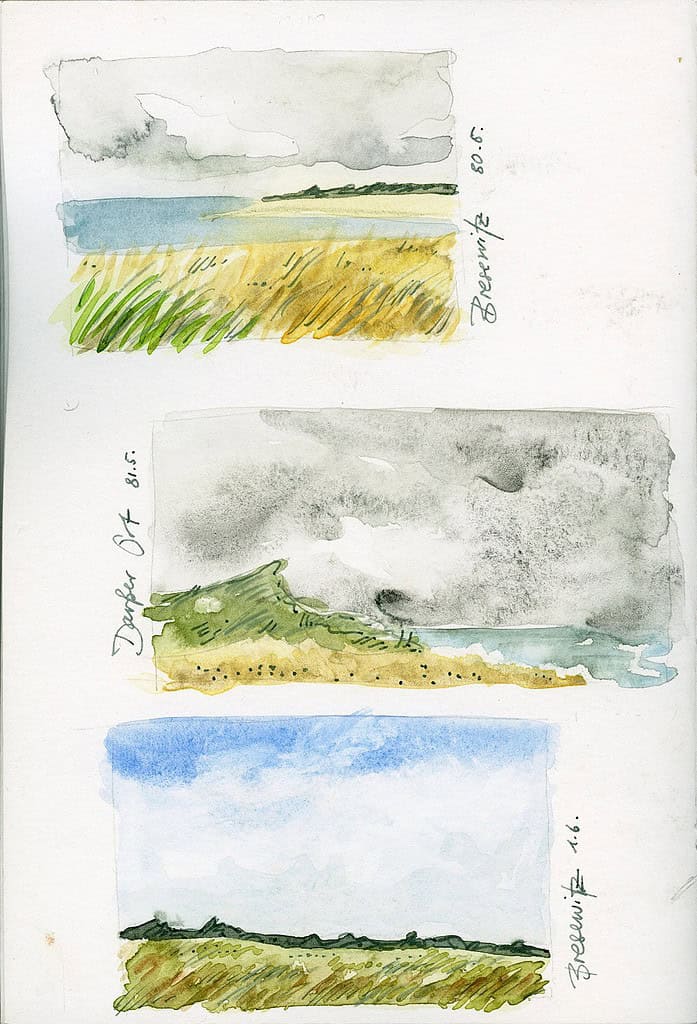
Arranging items around a centerpiece
Arrange items around one centerpiece. For this page, I knew I wanted a map in the middle, and sketched the landscapes and nature sightings around it. You don’t have to place them strictly where they belong on the map, you can use small arrows to show where you saw them. This makes the placement a bit easier. The sketch was done after I got home, so I was able to decide on the most interesting sights to sketch.
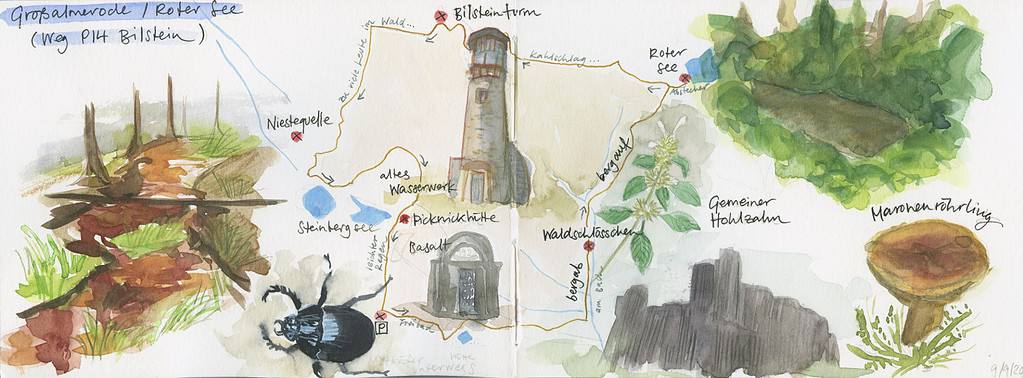
Using color
You can use color as an element of layout. For the spread with the blackbirds, I consciously decided which birds I want to have render in color to pull the page together and lead the eye through the image. By arranging the birds in a circle the eye will travel around the page without being led out of it at the edge – you want the viewer to stay in the frame. This is great for unifying pages that feel a bit scattered otherwise.
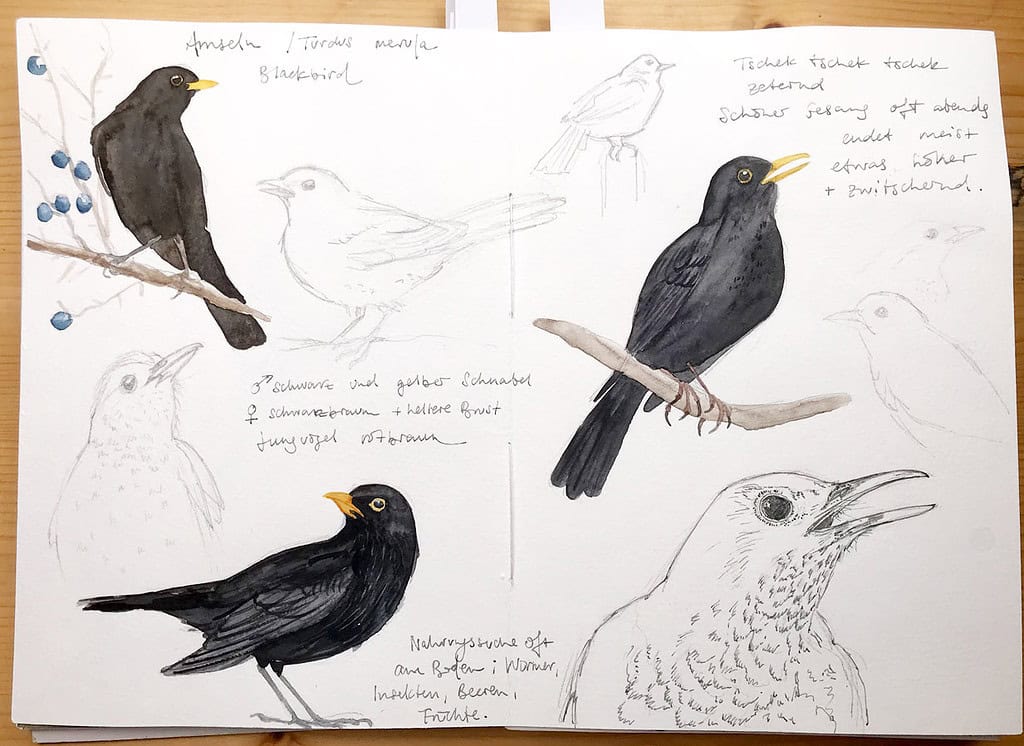
Another example is this page of woodpeckers. Not every sketch needs color, and this will give your page a better overall balance.
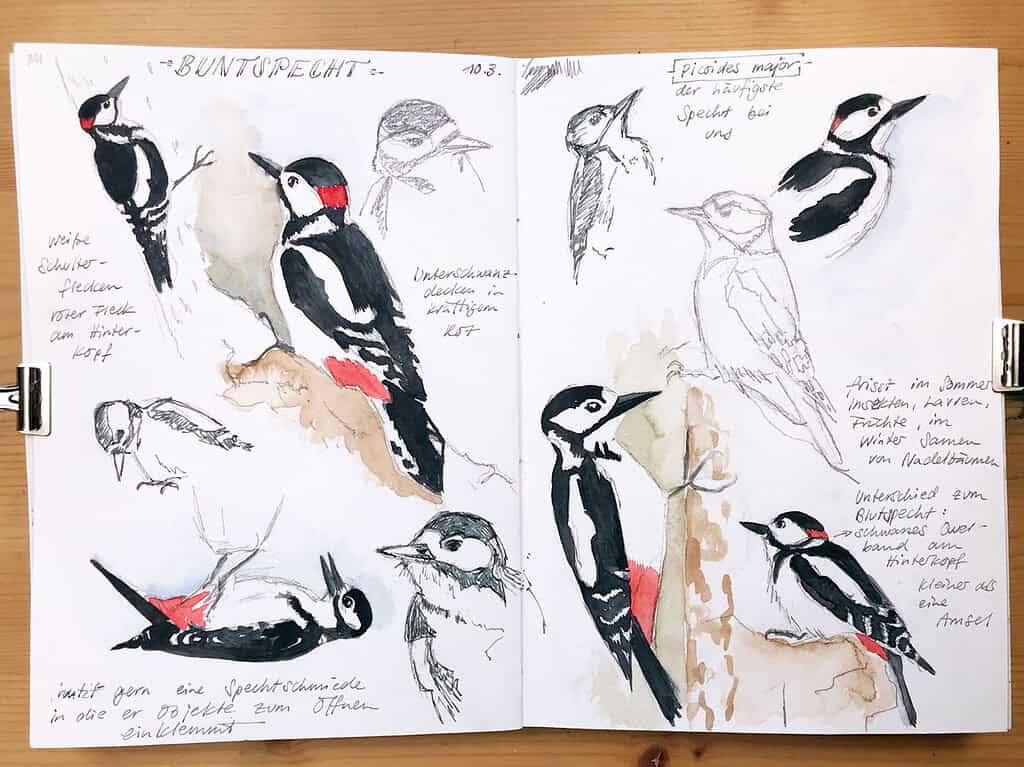
Combining images and text
You can combine images and text at any point, that’s the strong point of a nature journal. Your notes are as important as the drawings, and they give valuable information. Connect them with your images by placing them around your subjects. Adding text is also a great way to fill gaps. This method works when you have several elements on a page, but also for one subject.
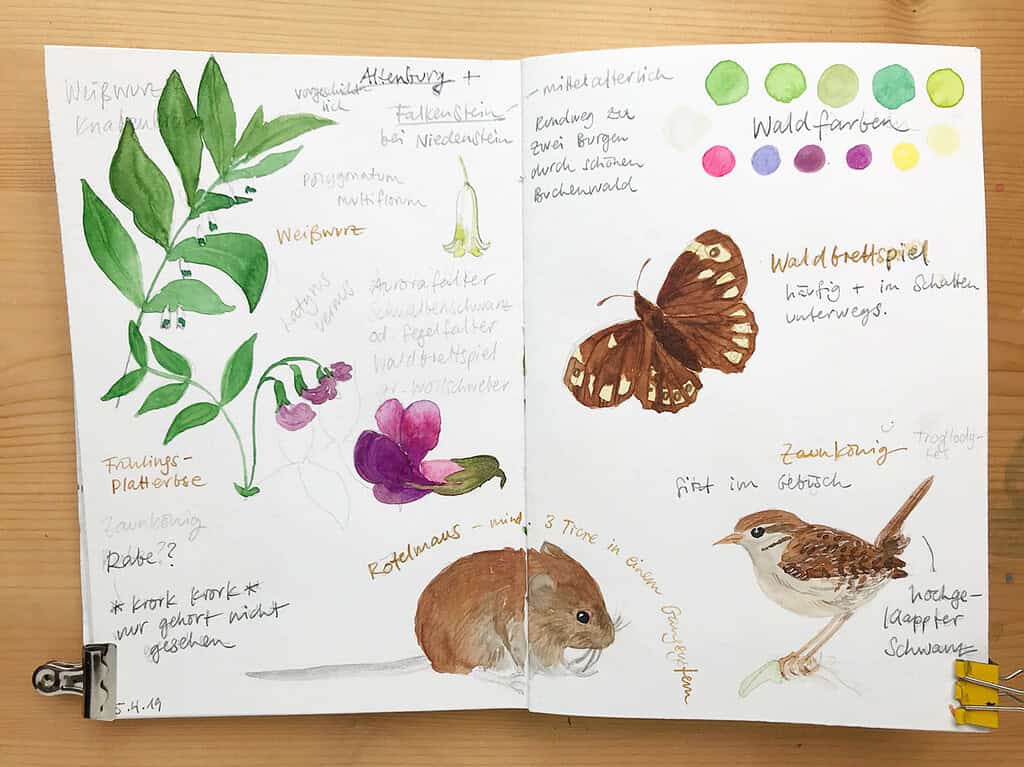
Another important aspect of functioning layouts is the negative space – the areas that are empty. You need to balance the parts that are filled with images or text with the parts that are left empty.
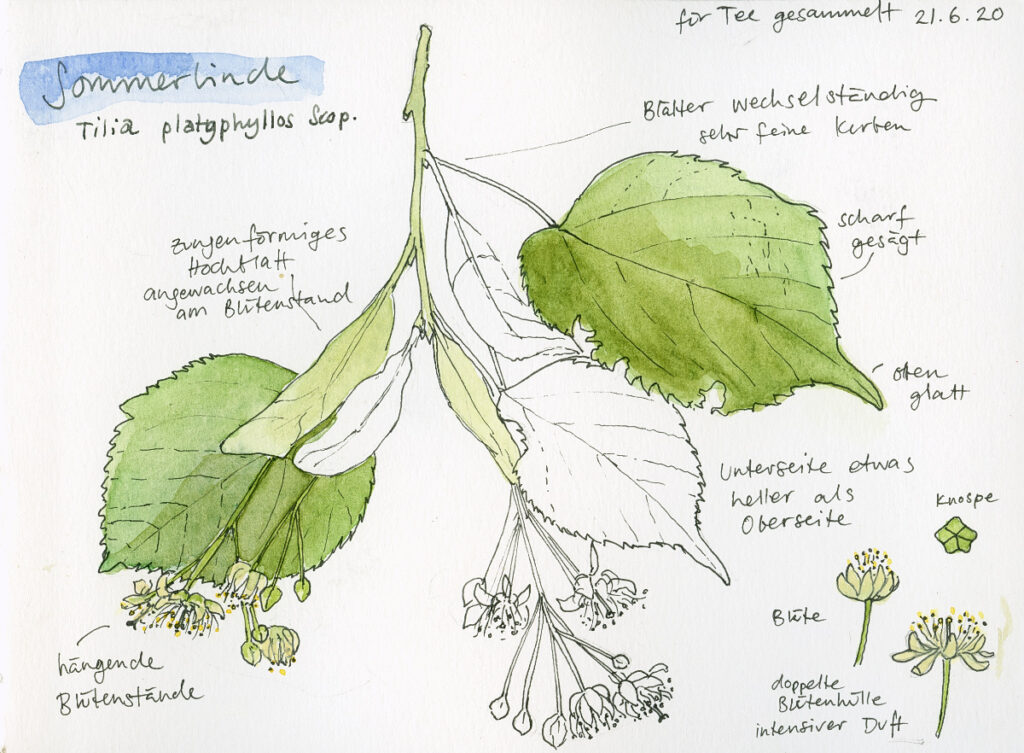
Unify the elements on your page
You can unify the elements of your layout by deciding what you draw beforehand. For this sketch, I decided beforehand I want to arrange different field flowers with similar length next to each other, with a bit of vertical text. This approach makes it easy for the eye to grasp the entire layout at once.
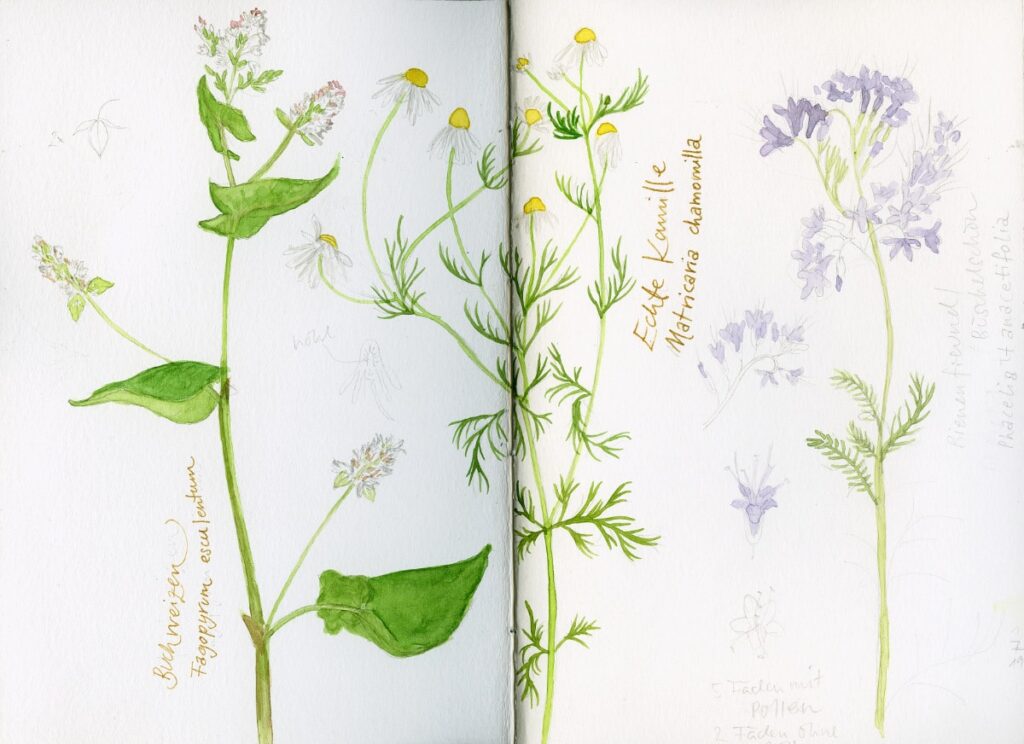
I followed the same thought process for the page of mushrooms:
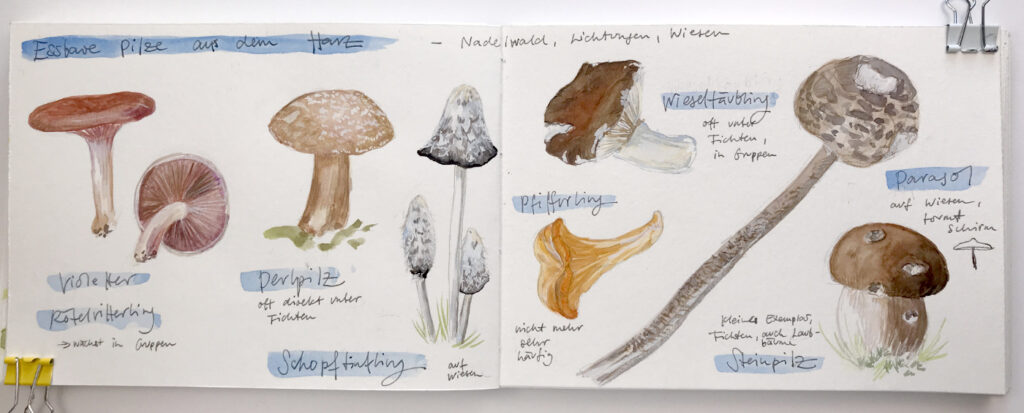
Make a plan
Think about what to place where before starting to draw – make a plan for your page. You can do this with a small thumbnail sketch or in your head. For this sketch, I wanted to arrange the central grass blade diagonally across the page, and then have the other flowers overlap and connect. The text fills the rest of the gaps.
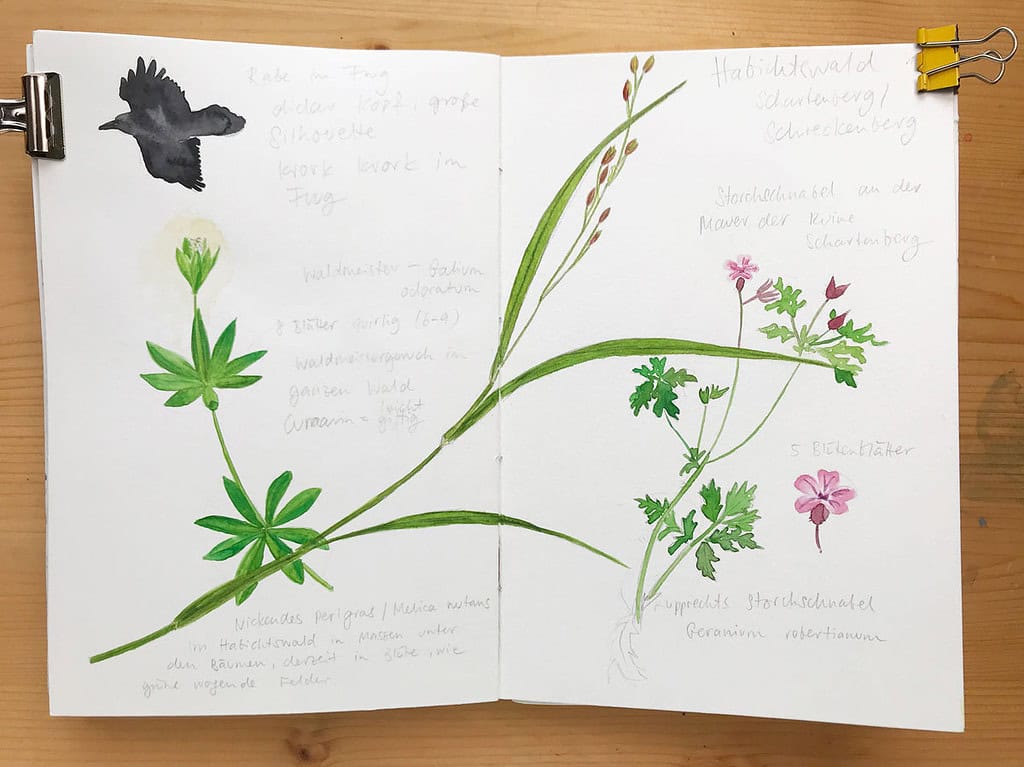
Give all elements the same weight
A layout can look very balanced if you give each element the same weight, or roughly the same space. For this page, I was thinking of insect collections in museums – which is hinted at by the small tag I drew around the title.
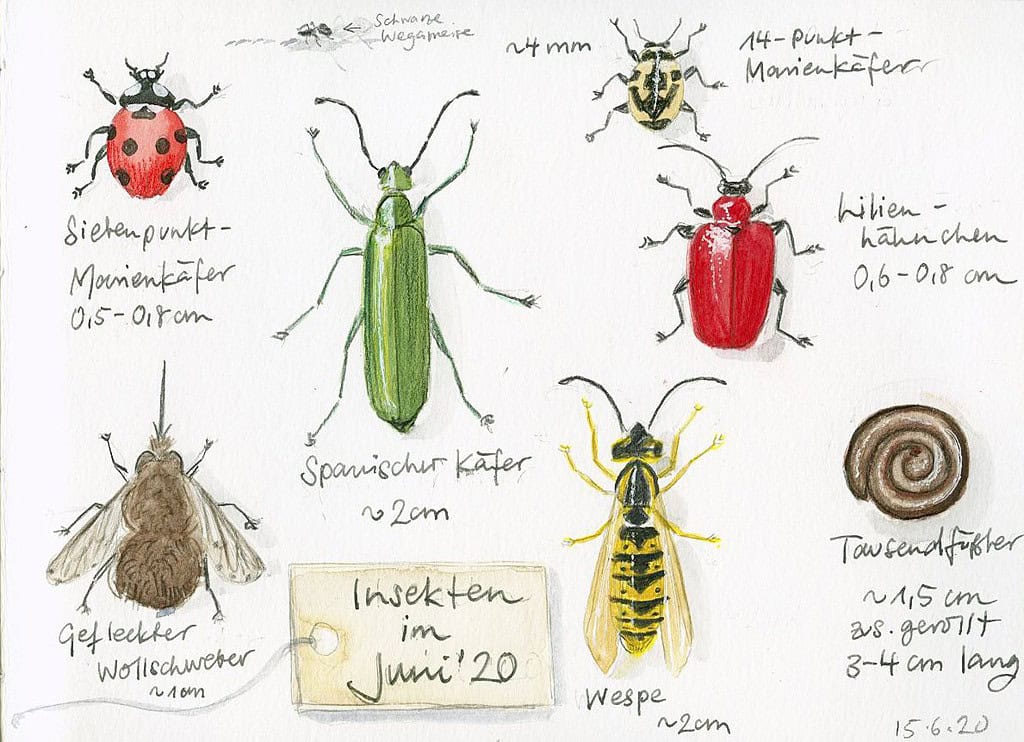
Adding boxes to group elements
You can draw boxes or lines around the elements of your page you want to group together. This makes a lot of small sketches simpler to process, it gives an immediate structure to the page.
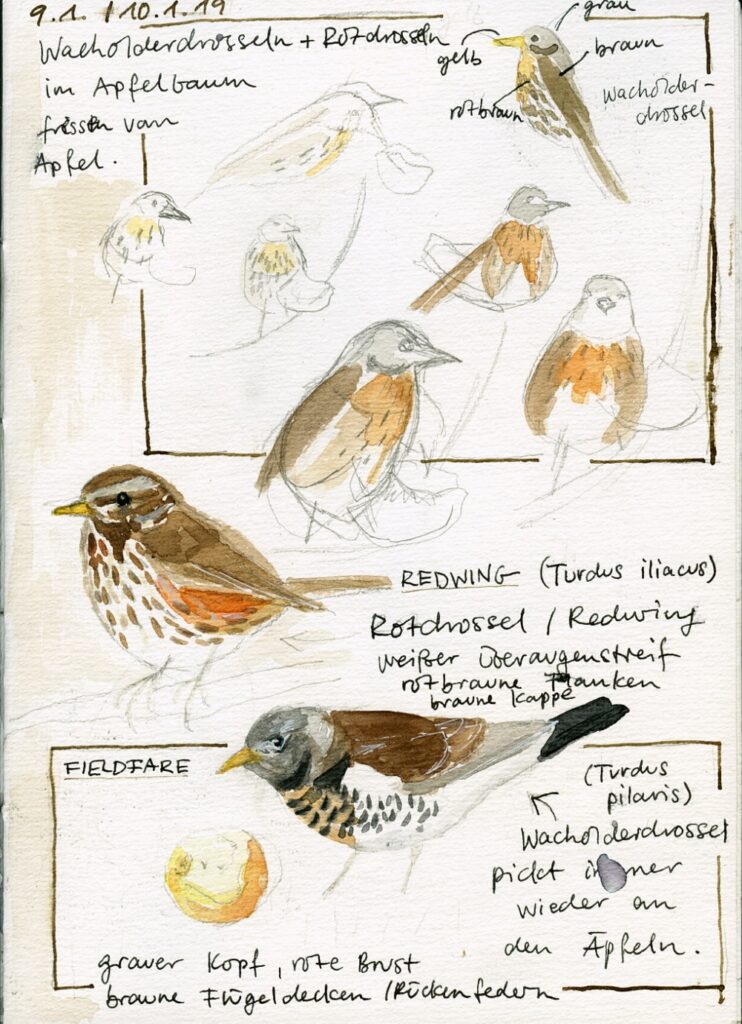
Create a narrative or timeline
Arrange your sketches in horizontal or vertical rows to create a narrative. Arrows hint at the sequential character of the single sketches – this is how to add the factor time to your sketches. This technique is particularly nice to use when you’re observing an animals behavior and make a quick series of sketches.
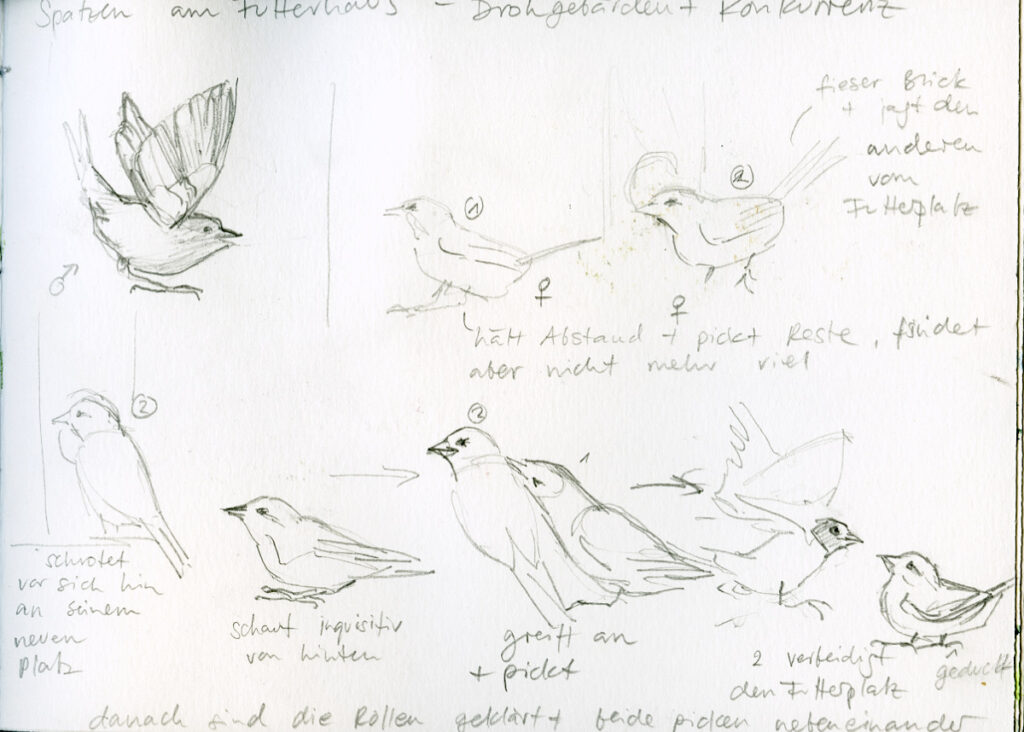
Order in chaos – Making it up as you go
Sometimes you just have to jump in and make it up as you go. For these pages, I didn’t have a particular idea, and I just started to draw. I usually place a title at the top and evaluate after each new sketch how it will flow into the next one. Since I often add color after filling the entire page with drawings, I can decide how to use it consciously, like for this page of sparrows or on the spread below.
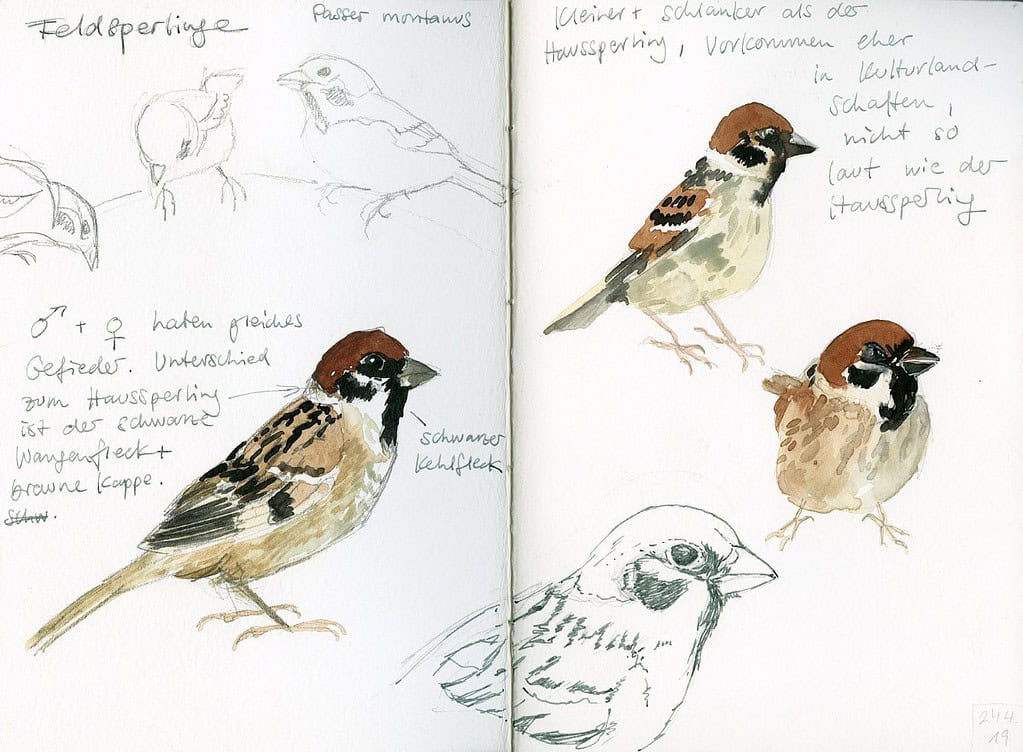
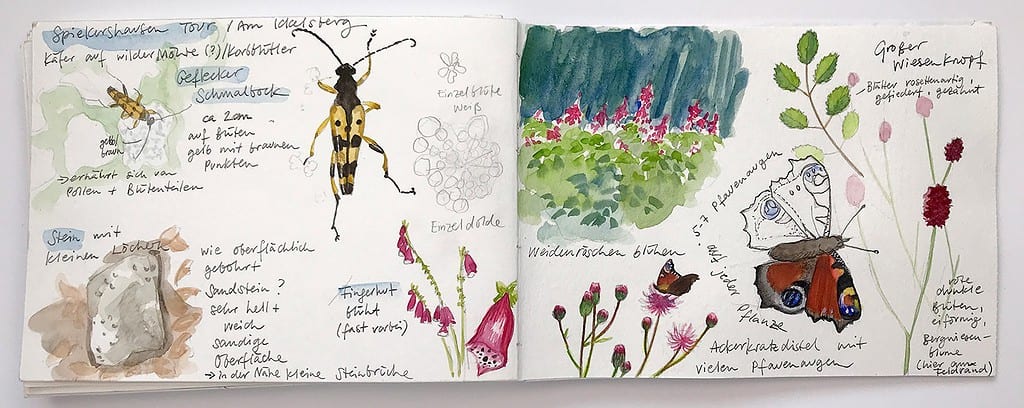
I hope you have learnt a few helpful ideas for page layouts in your sketchbook. This is just a very rough overview of examples I found in my sketchbooks, so there are plenty more. When I started this whole sketchbook thing, I searched around for compelling layout ideas, scribbled them down and took them with me – that way I had a reference to try out. These days, I usually come up with layouts on my own, but I still like to look at what other artists do.
With that, I want to wish you a hopefully good end to this very challenging year, in the hope for better days ahead. At the end of this year I feel exhausted and disillusioned, and I don’t have a good feeling about the next few months. So I’m more than ready to go into hiding in my sketchbook in 2021 while I wait for the vaccine.
Thank you so much for following along with me, for your continued support of my classes, and for all your nice emails, comments and questions. This is really a huge part of what keeps me going.
All the best to each one of you! I’ll return with new landscape sketches, nature journaling stories, blog posts and painting videos in the new year. Stay safe everyone!
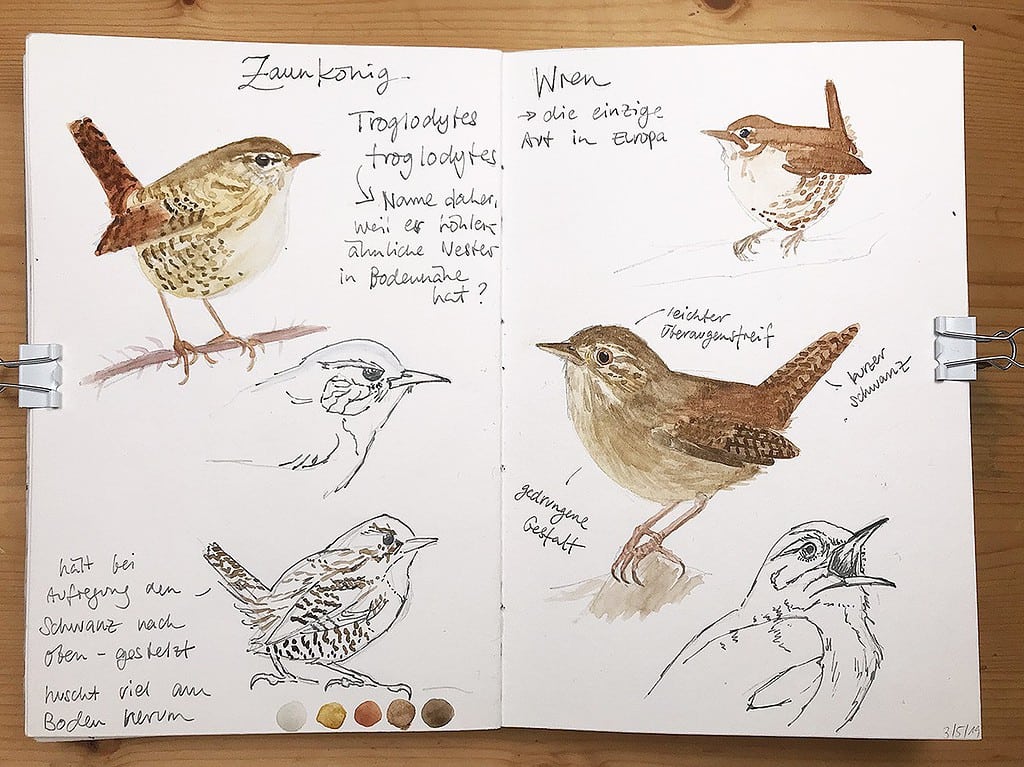



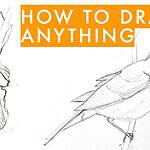
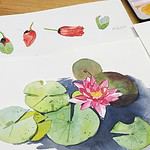

Sehr inspirierend!
Danke!
These are useful tips on layout. I like that you stated the idea and explained why it works. And of course I like that you followed with an example.
I’m glad my examples were helpful for you! 🙂
Thank you Julia for these inspirational pages! Wonderful to see how you organize your pages. I wish you the best in 2021!
Thank you Linda, all the best in the next year for you and your family, too!
The pages are all lovely and inspirational particularly the bird pages – my favourite subject! I hope you have a peaceful Christmas and best wishes for 2021
Your birds are so animated! Lovely drawings and great layout ideas……I’m going to try them out!
Thank you Julia!
I love the way your pages also contain unfinished black and white sketches and finished paintings of your subject too. This is very visually exciting on the pages about the woodpecker. Thanks for sharing your ideas and your pages for us to study and enjoy. I love your work!
A personal note to you: I am following up on my previous comment: I misspelled my own last name in my first comment. It is Tracie Storie (not Storue) and I do have a website though I haven’t updated it in quite a while. My Nature Journaling hasn’t found its way to my website yet. http://www.traciestorie.com
Thank you for sharing all of these clever ideas! I often get hung up on how to lay out my pages, so this will help a lot with that. I like that you’ve explained each example – and why it works.
All the best to you in 2021! I’m going into hiding as well, waiting for the vaccine and for better times ahead.
It’s really interesting to get a peak inside another artist’s sketchbook and see how they approach filling the pages. This is how I first discovered that adding text to a drawing was ok – even encouraged! As Jaci said, these are useful tips and so helpful to have the reasons for using different ones. I don’t blame you for continuing to hunker down for awhile in the new year – I plan to do the same! Merry Christmas . . .
Thank you for sharing your lovely sketchbook pages and the helpful tips and ideas. I love seeing other artists sketchbooks. Wishing you a blessed new year.
Thanks so much Julia, very inspiring layouts. Love your mushrooms
Yes, may 2021 be one of peace and hope not dark angst, although this bleak winter has to be endured….
Sometimes it’s good to lose yourself in your art or making for a bit, just to get through
Stay strong
Thank you for your tips. I love having the tool of Nature Journalling to help in times of anxiety and to relieve wonderful moments from being out in nature.
You have some greats idea’s and layout, loved the concepts of how you present it. Thanks for the information, it is a another great way to enjoy the great outdoors.